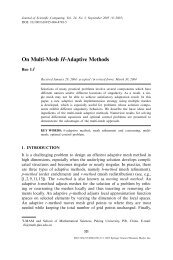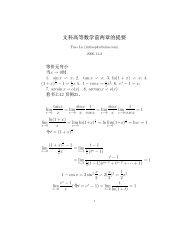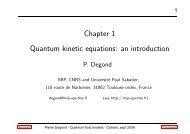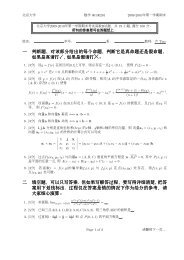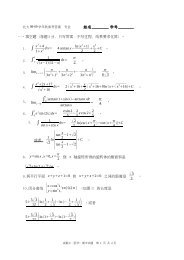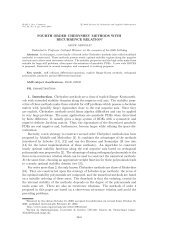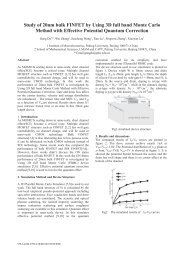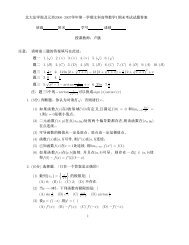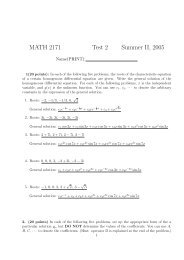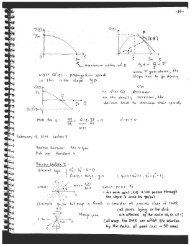Abstract
Abstract
Abstract
Create successful ePaper yourself
Turn your PDF publications into a flip-book with our unique Google optimized e-Paper software.
CHAPTER 4. THEORY 108<br />
we have at the k-th GMRES that<br />
rk2 ≤ p(A)2r02<br />
≤ √ √<br />
Lp(A)X Lr0X<br />
= Lp(A)Xr0X.<br />
Since Z ′ is compact in the X norm, we know that A = I −Z ′ has eigenvalues clustered<br />
about 1. Then writing p(A) = 1<br />
<br />
2πi Γ (zI − A)−1p(z)dz, where Γ is a curve containing<br />
all the eigenvalues of A, we can use the exact same proof as given in [10] to bound<br />
p(A)X and create the constants C>0andd>0 so that the estimate on the k-th<br />
GMRES residual holds.<br />
The difference between the proof shown here and the one given in [10] is that in<br />
[10], the compact linear operator is assumed to map a Hilbert space back to itself.<br />
Here, we are working on a subspace of a Hilbert space. One is free to choose what ¯ρ is,<br />
and can therefore, choose the convergence rate of GMRES. This convergence rate is<br />
asymptotic though, and GMRES first iterations will have to take care of the outlying<br />
eigenvalues before this convergence rate will kick in. This is represented by the con-<br />
stant d, the number of GMRES iterations needed before the asymptotic convergence<br />
rate begins. By choosing ¯ρ smaller though, the number of outliers increases, which<br />
will in turn increase the number of GMRES iterations needed before the asymptotic<br />
convergence rate applies.




